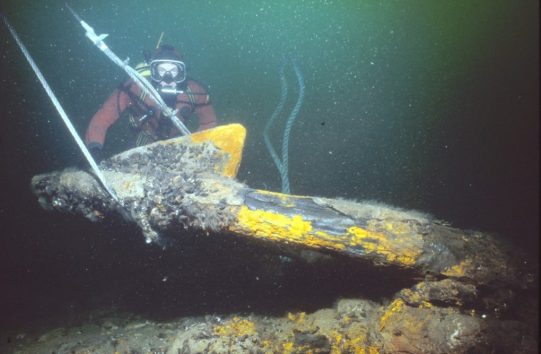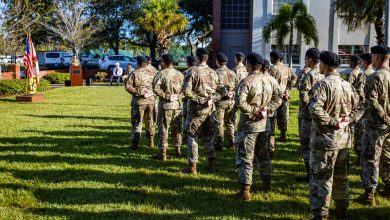Sir Robert Marx to Lecture On ‘Greatest’ 16th Century Sea Battles July 25 at Florida Tech
Free Event Starts at 6:30 p.m. at Gleason Performing Arts Center
MELBOURNE, FLA. — Undersea explorer and maritime expert Sir Robert Marx will discuss two of history’s most important sea battles in a free public lecture at 6:30 p.m. Tuesday, July 25, at Florida Institute of Technology’s Gleason Performing Arts Center.
The lecture, “The Greatest Sea Battles of the 16th Century,” is hosted by the Phi Kappa Phi Honor Society.
Marx, who has authored books on these battles, will focus on the battle of Lepanto, which started in October 1571, and the battle of the Spanish armada, which began in July 1588.
The massive Lepanto battle, in the Greek area now known as the Gulf of Corinth, was between Christians from most nations of Europe, known as the Holy League, and the Muslims of the Ottoman Empire. The fleet of the Holy League consisted of 253 ships armed with 1,815 cannons and carrying 50,000 sailors and 32,000 soldiers. The Ottoman fleet of 278 galleys was propelled by 37,000 Christian slaves, with 750 guns and over 50,000 soldiers and seamen.
The bloody, prolonged battle that killed 30,000 men – primarily from the Ottoman side – was won by the Holy League, which sank 141 enemy ships and captured 11,000 prisoners. More than 12,000 galley slaves were freed.
“This awesome battle changed the course of history by basically eliminating the Ottoman domination of the Mediterranean,” Marx said.
Not quite two decades later, the seas one again hosted a battle of epic proportion. In 1588, King Phillip II of Spain, responding to attacks on Spanish treasure ships ordered by Queen Elizabeth I, decided to invade Protestant England. He amassed a fleet, which at the time was called the “Invincible Armada,” of 165 large ships from as far away as Naples, Italy, armed with over 2,500 cannons, 18,000 soldiers and 8,000 seamen. The English fleet commanded by Lord Howard of Nottingham had 200 ships hastily called into action with news of the approaching Spaniards, each with an average of 40 cannons and crews of around 200 men used as both sailors and artillerymen.
The battle began off Plymouth on July 21, 1588, and raged on for a month before the British won – with an assist from Mother Nature, Marx said. “Driven up the east coast of England by inclement weather, around Scotland, then down the west coast of Ireland, ship after ship succumbed to the hostile seas, leaving more than 5,000 dead. Only 67 ships ever got back to Spain,” he said.
For more information on the lecture, please call 321-674-8096.
###





